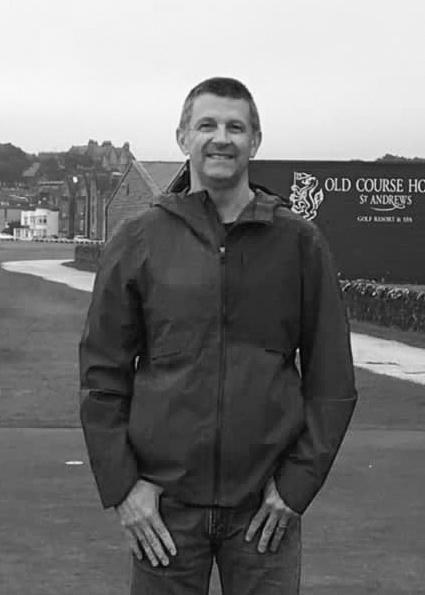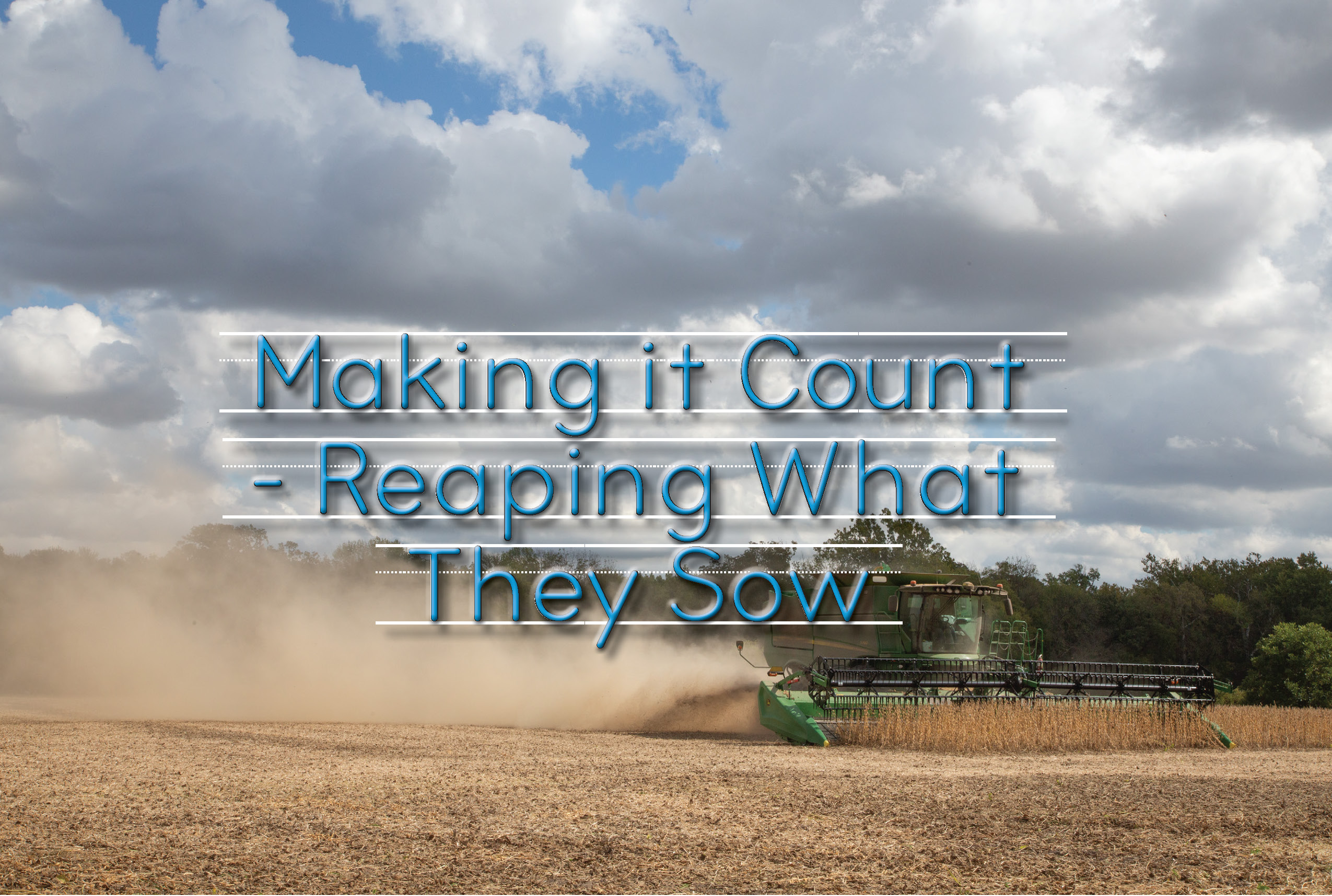| story by | |
| photos by | Steven Hertzog |
| OPEN A PDF OF THE ARTICLE |
Aviation experts use mathematics in nearly everything they do, whether it’s flying a plane or helicopter, working in air traffic control, measuring fuel use and determining wind speeds, or flight planning for emergency services.
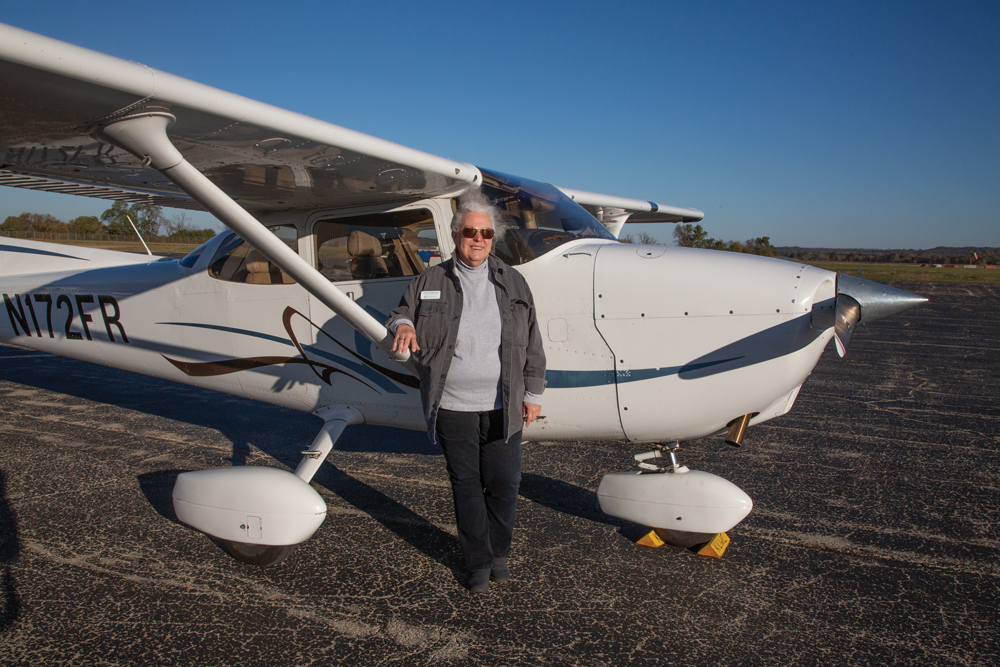
Clancey Maloney, chair of the Airport Advisory Board
Clancey Maloney recalls flying her airplane from New Mexico to Missouri several years back when she received a sudden call over the radio from air traffic control. There was a squadron of aircraft flying in her vicinity and at her altitude of 11,000 feet. She was asked to immediately descend to 10,000 feet to remain at a safe distance and continue her flight unimpeded.
“It turned out to be the Canadian demonstration team flying home,” Maloney says. “The Snowbirds, they called them. They released smoke to show me they were there. It really was an impressive sight.”
As a pilot that day, Maloney was required to make a simple mathematical calculation: 11,000 minus X equals 10,000, which told her she needed to descend 1,000 feet to safely avoid the Canadian aircraft. But it focuses on a much larger point when it comes to aeronautics and aviation.
“It’s all applied math and science,” says Maloney, who’s been piloting aircraft for more than 40 years. “Charts and graphs … you have to know how to read. You have to be able to understand rates of descent and altitudes. You use trigonometry to understand vectors and vector analysis. You have to be able to figure how far you can fly on the amount of fuel in the tank.
LOCAL MATTERS
Our Local Advertisers – Making a Positive Impact
“Math plays a role in just about everything you do,” she explains.
That rings true in just about every aspect of aviation and aeronautics, whether it’s a private pilot flying charters with her own plane, such as Maloney, or companies that operate locally, regionally, nationally or even globally in the field. Hetrick Air Services operates a flight school, sells and rents aircraft, performs aircraft maintenance and leases hangar space out at the Lawrence Regional Airport. EuroTec Vertical Flight Solutions performs maintenance on helicopters, helicopter engines and airframes, as well as engineering new cutting-edge engine and battery technology. Life Flight also flies in and out of the Lawrence airport.
They all operate in the aeronautical realm, and they all apply principles of mathematics in a majority of day-to-day operations. Even air traffic control—Lawrence doesn’t have a tower so must rely on operations in Kansas City, Olathe and St. Louis—uses math in just about every decision made.
“I probably don’t go more than an hour every day without doing some sort of math problem,” says Aaron Kuehl, engineering director at EuroTec. “Geometry, trigonometry … math relationships are involved in most everything we do.”
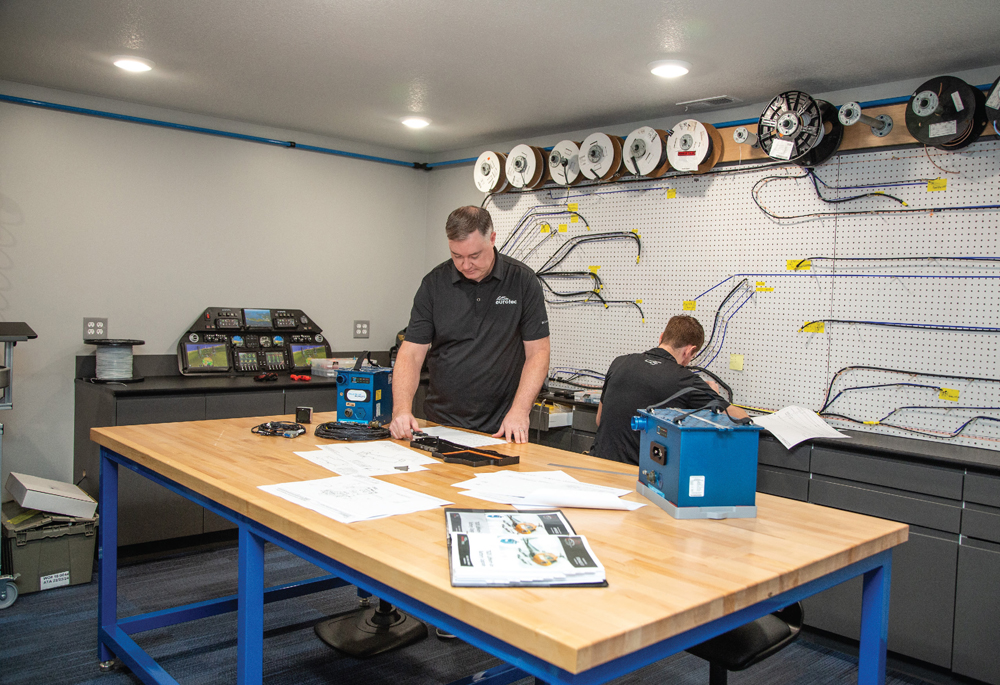
Eurotec VFS Avionics Lab – Fabrication of Custom Wiring Harnesses and Inspection to Interconnect Drawing Requirements
Rocking It Old School
Maloney is a third-generation pilot who, despite not starting until she was in her 30s, has been flying for more than 40 years. In fact, back in 1943, her mother was one of the first women to fly solo out of the Kansas City downtown airport. Her grandfather purchased and flew an NC-2620, a WWI surplus Jenny, in the 1920s in Grundy County, Missouri.
“There’s still only about 6 to 7 percent of women pilots working today,” she says.
As a longtime veteran flyer, she’s seen the changes in aviation technology.
“You used to have physical maps and stopwatches,” she says. “Now you can see the world on your iPad. You have to know the technology.”
Rest assured; Maloney knows the latest piloting expertise front to back. But she is the first to admit she’s also a bit old school. Even with the latest in-flight tech, the possibility always exists of system failure. She speaks of this as she pulls an old, what can only be described as a circular slide rule from her thick bag of flight materials. This can be used to calculate the amount of fuel she needs to make a specific trip.
“My plane goes about 200 miles per hour,” she says. “It burns about 20 gallons of gas in an hour. If I need to know how much gas I have or how far I can go on a tank, I need to figure that on my slide rule.
“Of course, we have electronics to tell us these things now, but I still carry it in case I lose electrical. I’m old school. I still take out charts and mark down landmarks and where I need to go.”
Measuring fuel is just the beginning of how a pilot applies math principles in flight. While an air traffic control tower might tell a pilot how many degrees an aircraft needs to turn, geometry must be applied in knowing how sharp a 30-degree turn is. If there’s an object at the end of a runway, such as a tree, rates of ascent and/or descent must be calculated to avoid those obstacles. Math must be used when calculating the length and width of a runway, as well as the makeup of the runway surface, to determine whether an aircraft can land or take off safely.
Pilots also must be able to calculate Greenwich Mean Time, which is the time primarily used in air traffic control.
“As a pilot, it’s your responsibility to know everything about the aircraft and specifics of flights,” Maloney explains.
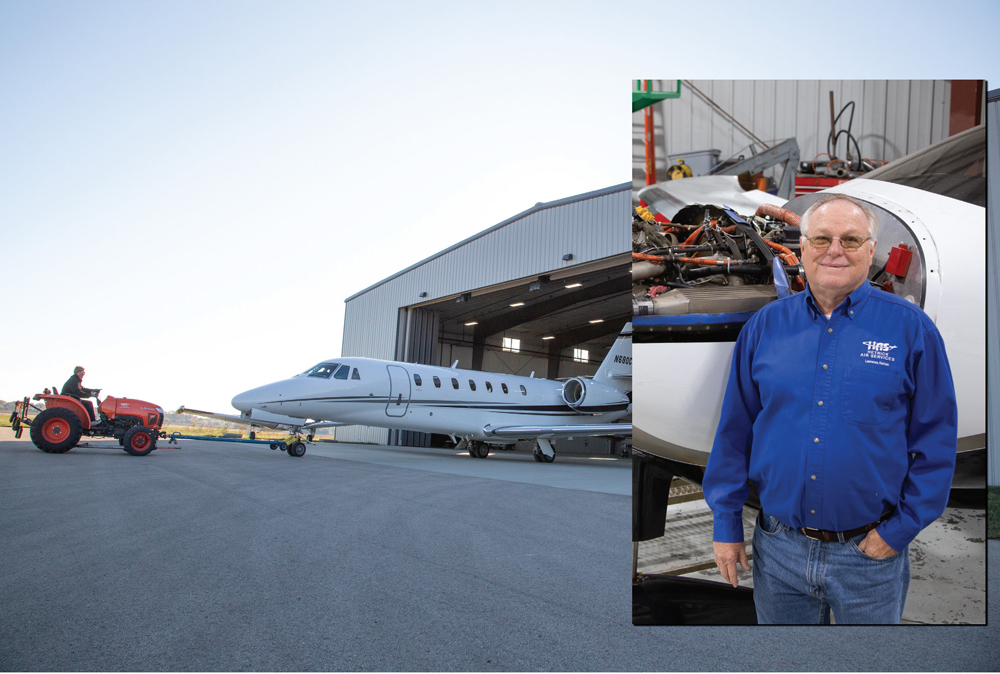
Hetrick Air services private planes in their hangars at The Lawrence Regional Airport; Lloyd Hetrick, president Hetrick Air Services
Math and Maintenance
Hetrick Air Services has been offering customers flight lessons, aircraft rental and sales, aircraft maintenance, hangar service and flight tours for 40 years in Lawrence (and 15 years before that in Topeka). And as Maloney mentioned, principles of mathematics have been applied in nearly everything the company does.
“Pilots are always dealing with math,” says Hetrick Air Services President Lloyd Hetrick. “Especially when it comes to figuring weights and balances of aircraft. Of course, there are computer programs that do all that today.”
Hetrick reiterated Maloney’s points as well about using math to gauge fuel usage, going a step further to point out his pilots and student pilots need to be able to not only figure fuel usage but adjust those calculations based on wind speeds, converting gas mileage based on headwinds, tailwinds and crosswinds. Equations like “weight times location” are used to help navigate moments when it’s needed to calculate fuel reserves.
“Most of it is normal addition, subtraction and multiplication,” Hetrick says. “The more tools you have, the better you can be.”
And speaking of tools, Hetrick says math also is used widely in the company’s machine shop to measure such factors as the proper torque to use when tightening nuts and bolts. There also is a piece of equipment called a “crow foot,” which is an extension to a nut that is necessary to mathematically convert to the right leverage when working with it.
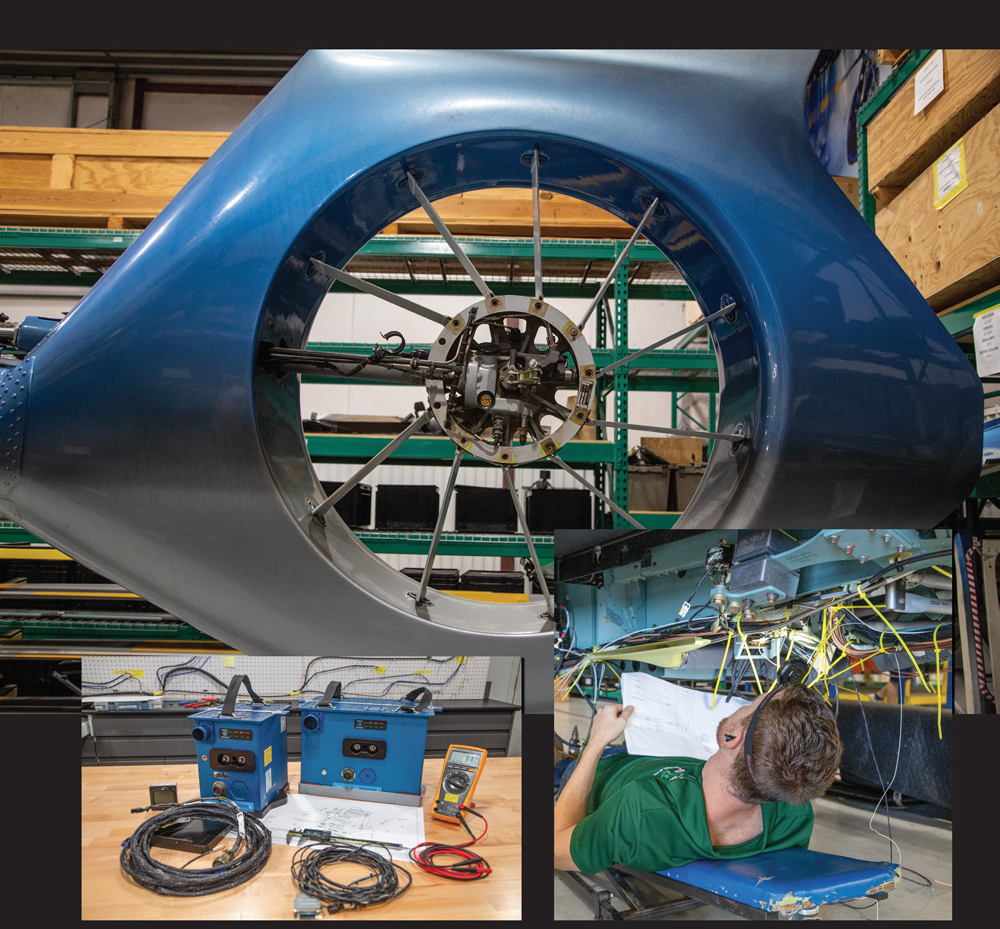
Airbus H135 Helicopter – Fenestron with Tail Rotor Assy being disassembled for inspection and repair.; VFS by Eurotec Li-Ion Battery STC Kits for Airbus Light Helicopters.; Avionics Upgrade on Airbus H125 Helicopter – Verifying New Wiring Harness Installation and Interconnect to Existing Airframe Avionics.
Math Gone Vertical
When it comes to vertical flight in the Lawrence area, EuroTec Vertical Flight Solutions has provided the answers to its customers for nearly two decades.
EuroTec is a helicopter and engine sales and leasing company that’s provided maintenance, repair and overhaul services for Airbus helicopters and components and Safran helicopter gas turbine engines for the last 20 years. A Federal Aviation Administration (FAA) repair contractor, EuroTec operates two hangars at Lawrence Regional Airport but also has a corporate headquarters in Eudora, a satellite operation in Hamilton, Ontario, Canada, and a business partner in Japan. It sells parts worldwide.
And as Kuehl explains, he and his staff use math principles in much of what they do, especially when it comes to new product development, such as lithium-ion battery replacements that provide more power, weigh half as much and last twice as long.
“When we’re doing custom fabrications, we’re doing drawings,” Kuehl says. “We start with basic hand stuff on a piece of paper to get started then use computer programs for structure evaluation, 3D modeling. We’re doing stuff related to modifications … rebuilding aircraft, mounting electronics. It all requires analysis.
“Every time I’m designing something, I have to measure things, look at existing structures, what they’re capable of holding,” he adds.
Everything must be coordinated with the FAA to approve installations, Kuehl continues. All aircraft also have maintenance schedules that must be met. Big checks come at two, six and 12 years. At 12 years, aircraft must be completely taken apart and checked.
“It’s all pretty math heavy,” he says.
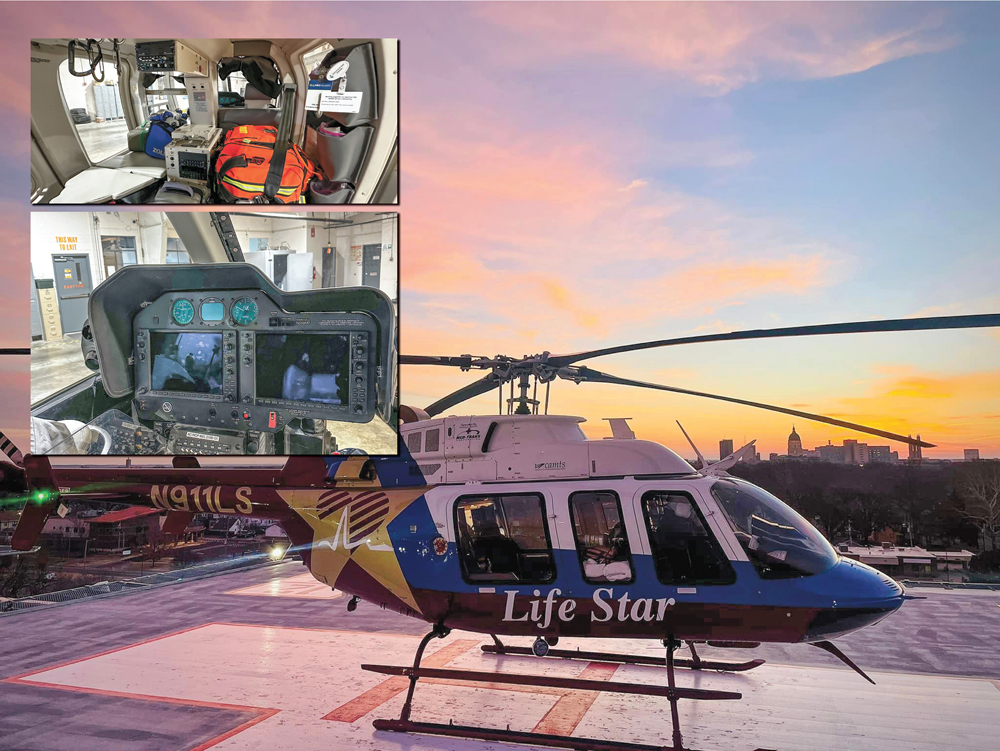
Exterior and interior photos of Life Star emergency helicopters
Vertical for Emergencies
If a bad accident or medical emergency should happen in a remote area far away from a medical facility, you’ll be happy to know that Life Star of Kansas Air Medical Services has one of its three operating centers at Lawrence Regional Airport.
The Lawrence Life Star location, known as Life Star 1 (Life Star 2 is in Junction City, while Health Star 1 is in Overland Park), operates out of a hangar and has full accommodations for crew in what is a 24/7/365-manned base. Life Star 1 contains one helicopter and four pilots who alternate seven days on, seven days off, 12 hours on, 12 hours off rotations. There’s one full-time mechanic along with a backup. It also employs three full-time nurses and three full-time paramedics, along with two part-time nurses.
On average, Life Star 1 makes one to two calls to emergency scenes per day.
Adrian Horne, base aviation manager, says his crew utilizes basic math principles beginning from the time an emergency call comes in to the time the helicopter returns to the hangar.
“There’s much that goes into flight planning,” Horne says. “A call comes in, and we first have to determine whether we can take the flight. We have to determine the length of the flight, weight of the aircraft, weight of crew, weight of the patient … . It’s all weights and balances.
“It’s the ratios it takes to get from point A to point B safely,” he adds.
Weather—winds, temperatures, visibility—also are big factors in gauging a flight’s capabilities. During summer months, high temperatures affect an aircraft’s weights and how much can be carried safely.
“We have charts on board to show what we should be pulling based on various temperatures, wind speeds and distances,” Horne explains.
Flight headings mostly are plugged into a computer navigational system, but Horne says calculations must often be made for distance headings, especially when flying to especially remote areas.
“I’ve been flying aircraft for quite a while,” he says. “Math is critical to what we do.”
Controlling the Skies
Brian Von Bevern served as an air traffic controller for 25 years, beginning in the early 1980s in Fort Worth, Texas, before moving to Olathe, which helps control air traffic in the Lawrence area. He’ll be the first to tell you that from the time he began focusing on radar screens at the beginning of a shift to quitting time, math was at the forefront of his thoughts.
“Pretty much everything in aviation is math-oriented,” says Von Bevern, who today is retired but volunteers as public information officer for the Commemorative Air Force, Heart of America Wing, a nonprofit that preserves and honors veterans and aircraft that fought for America in previous wars. “Everything is numbers.”
A simple example he gives involves many of the restored World War II planes he flies, which travel at a top speed of around 600 miles per hour (mph). Given there’s 60 minutes in an hour, it can be calculated that a speed of 60 mph is equivalent to traveling 1 mile per minute. Simple multiplication then shows that Von Bevern’s WWII planes, at 600 mph, can cover 10 miles per minute.
“Proportions is how you’d encapsulate it,” he says.
Von Bevern says numbers ran through his head during entire shifts as an air traffic controller. Figuring turn angles, speeds of aircraft, aircraft separation criteria—it all took constant calculations involving math.
“It was done in my head on a constant basis,” he says. “I was constantly updating (calculations) on a real-time basis.”
Von Bevern says there’s an FAA air traffic control academy in Oklahoma City where air traffic controllers spend three months learning all the math they need to know. They’re required to memorize mileages between landing and takeoff areas, as well as mileages between where flight patterns intersect. By the end of the academy, they can run a 45-minute computer program that keeps planes safe and clear of each other.
“A lot of it comes down to an internal sense of timing,” he says. “That’s math. Starting a clock in your head.
“The whole job is pretty much math … on the fly, so to speak,” Von Bevern says.


